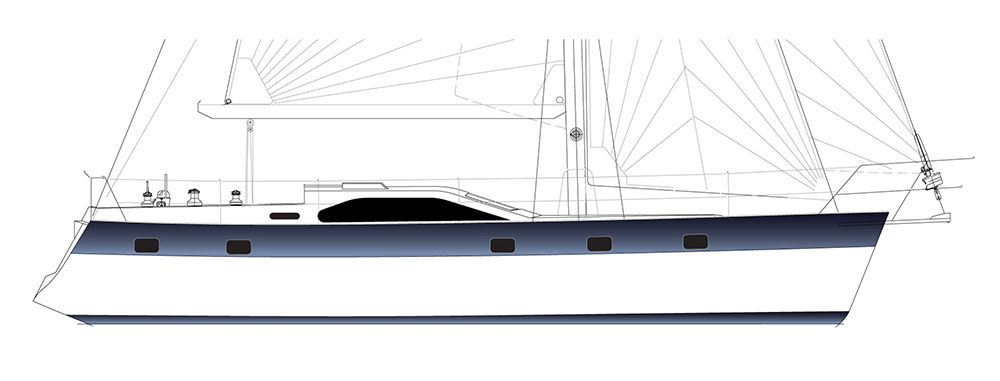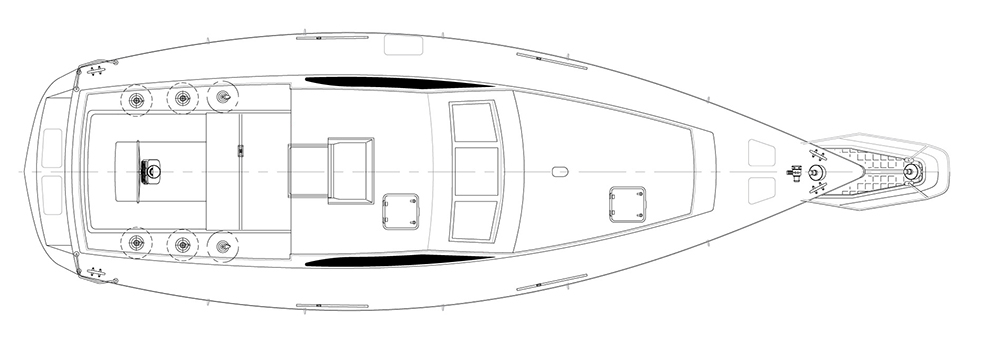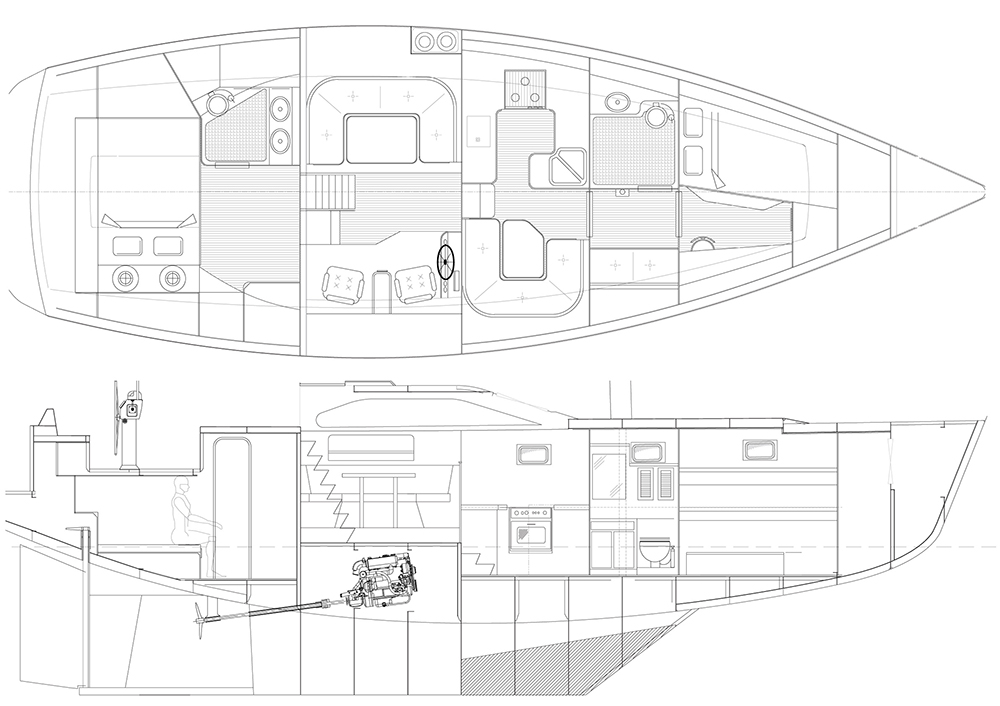Voyager DS 440
This offshore cruising design is a kit for the home builder
We can talk about this boat later. First I want to talk about Bruce Roberts. There are several ways you can be a yacht designer, Bruce chose his own way. Born in Victoria, Australia, Bruce opened his yacht design office in 1966. Bruce concentrated his efforts on stock plans for amateur builders and has done that to this day.
Typically, a struggling young designer will offer stock plans because no one wants to pay them for a custom design. Stock plans sell for a fraction of what a custom design would cost. The idea is that you sell multiple copies of the stock plan. The reality is that only a small percentage of plan sold result in a finished boat. Bruce stayed with developing stock plans and in 1972 opened an office in the United States.

Bruce made a science out of developing stock plans and wrote books on construction methods that augment his plans. The stock plans covered a wide variety of sizes and types and almost all were available in multiple materials for construction. Today you can buy precut steel or aluminum kits that greatly reduce the build time for the home builder. Bruce has dominated the field of stock plans and kits for home builders. Today Bruce has offices in Annapolis, Maryland, and Holland. He lives in Spain and has a vacation home in France. To paraphrase Garrett Morris on Saturday Night Live, “Yacht design has been very good to me.” I have known Bruce for more than 30 years and I consider him a friend.
The Roberts DS 440 is designed for steel or aluminum construction. The hull form is what is called a radiused chine. In this case, a single radiused chine. This method allows the topsides and bottom plating to be made flat plate shaped in what is called “conic development,” meaning all shapes are a portion of a cone so no compound bending is required. You might do the same if the boat was built in plywood.
You could leave a sharp chine or corner at the joint of the two sections of plate, but Bruce has connected the topsides plating and the bottom plating with a constant radius plate that knocks the curse off the corner. Yes this restricts the shape options for the hull. The hull shape is a function of how well the design can manipulate the geometry. If you have a good eye you can usually spot the flat plating in the topsides when the boat is in the water. I’ve used this method a few times and you have to look very hard to spot the geometry at work. Typically, if done well, it will just look like a round bilge boat.

This is a heavy boat displacing 47,000 pounds and drawing 6 feet 6 inches for a D/L of 256. That’s about the same as a Valiant 40 so it’s not too heavy. The L/B is 3.08. The keel is a long fin that will be nice when you haul out in Timbuktu. There is a strut connecting the trailing edge of the keel to the skeg, which to my eye seems overly large. I’d prefer to see a rudder with some balance area on a boat this size so the helm pressure can be reduced. Freeboard is high and critical to making the interior layout work.
The layout appears to be that of a center-cockpit design. Wrong! This is an aft-cockpit design with the cockpit raised and an extended bridgedeck added to gain the required headroom in the aft cabin. There is an athwartships double berth aft and a large head to port. The raised saloon has a U-shaped dinette and steering station to port and the dreaded reading chairs to starboard. Stepping down from the saloon, the galley is to port and a snug—maybe too snug—dinette to starboard. The galley is fabulous.
Forward of this there is a head to port and short seat to starboard with outboard lockers. I’d steal some volume from that large head and that small seat and increase the size of that dinette. Look how small the dinette table is. Try putting four 10-inch dinner plates on it. There is a double berth forward to port. The downside to this layout for serious cruising is there is very little deck access stowage. There is a minimal lazarette and that’s it.
But this is a boat for the home builder and all the small details can, with the guidance of Bruce, be changed to fit your cruising needs.
Need a project for next winter?
LOA 44’9”; 43’5”; Beam 14’6”; Draft 6’6”, shoal 5’8”; Displ. 47,000 lb.; Ballast 11,500 lb.; Sail area 793 sq. ft.; Fuel 110 gal.; Water 223 gal.; DL 256; L.B 3.08
Our best estimate of the sailaway price: $210,000
Bruce Roberts Yacht Design


Comments